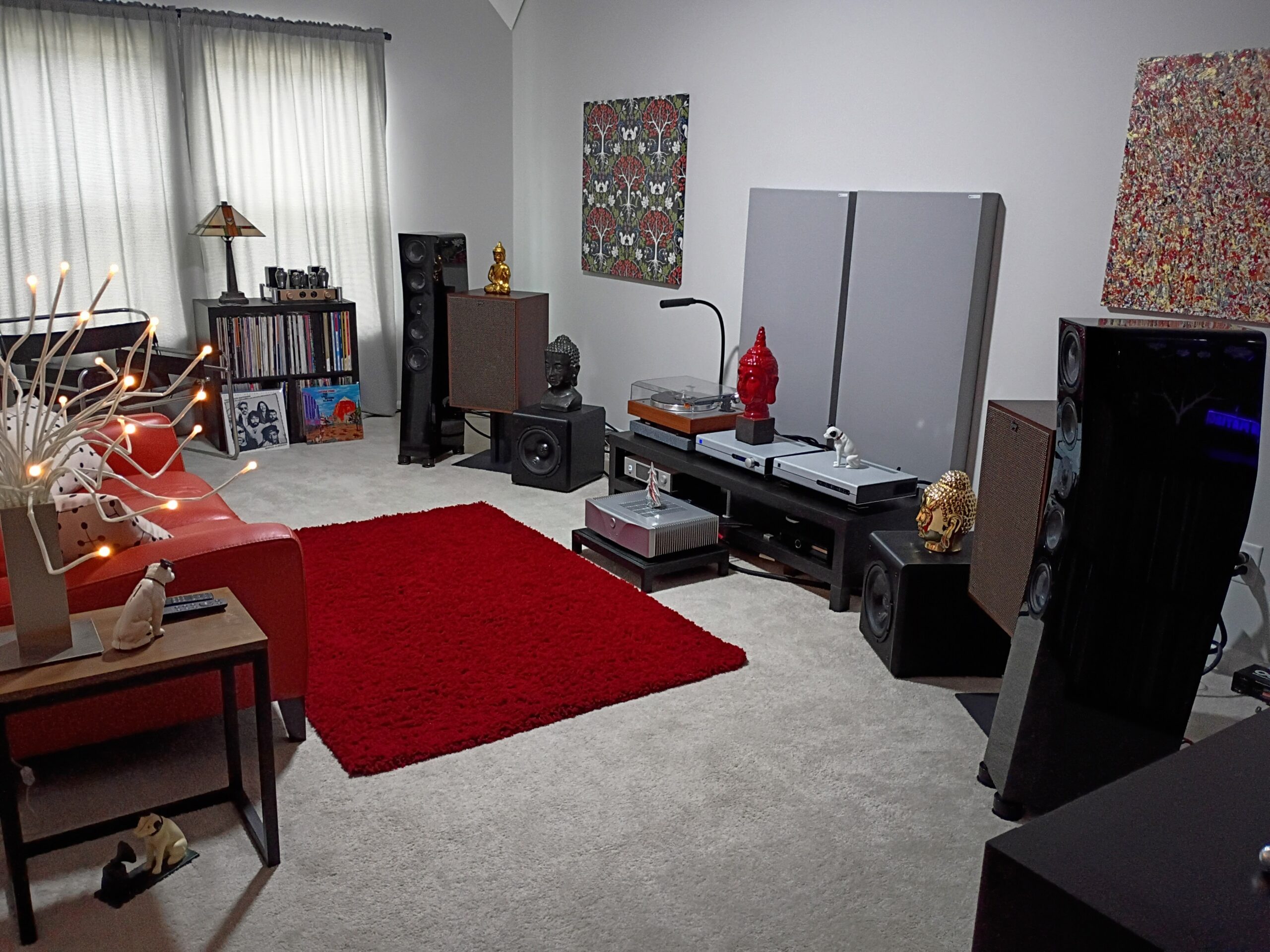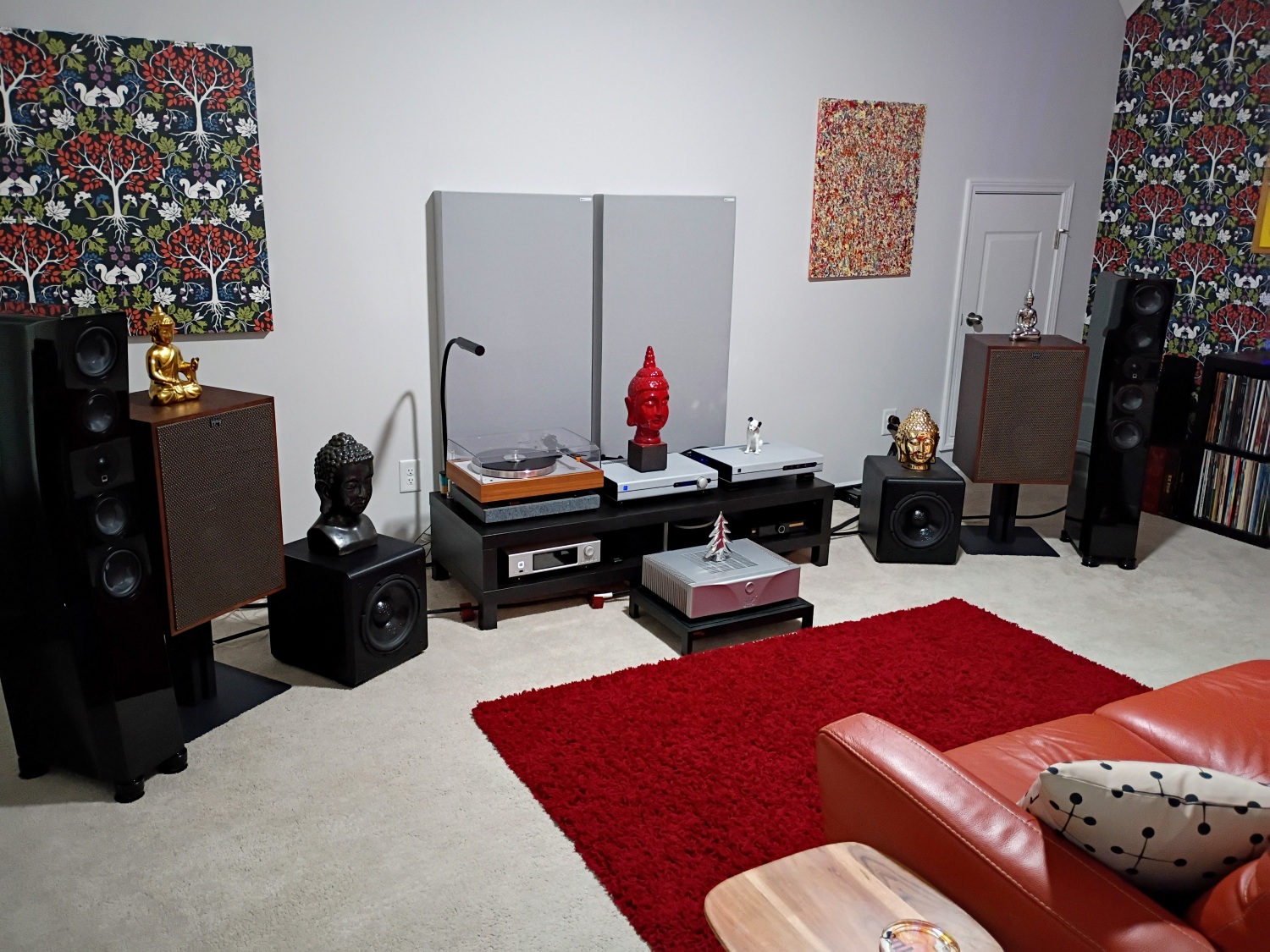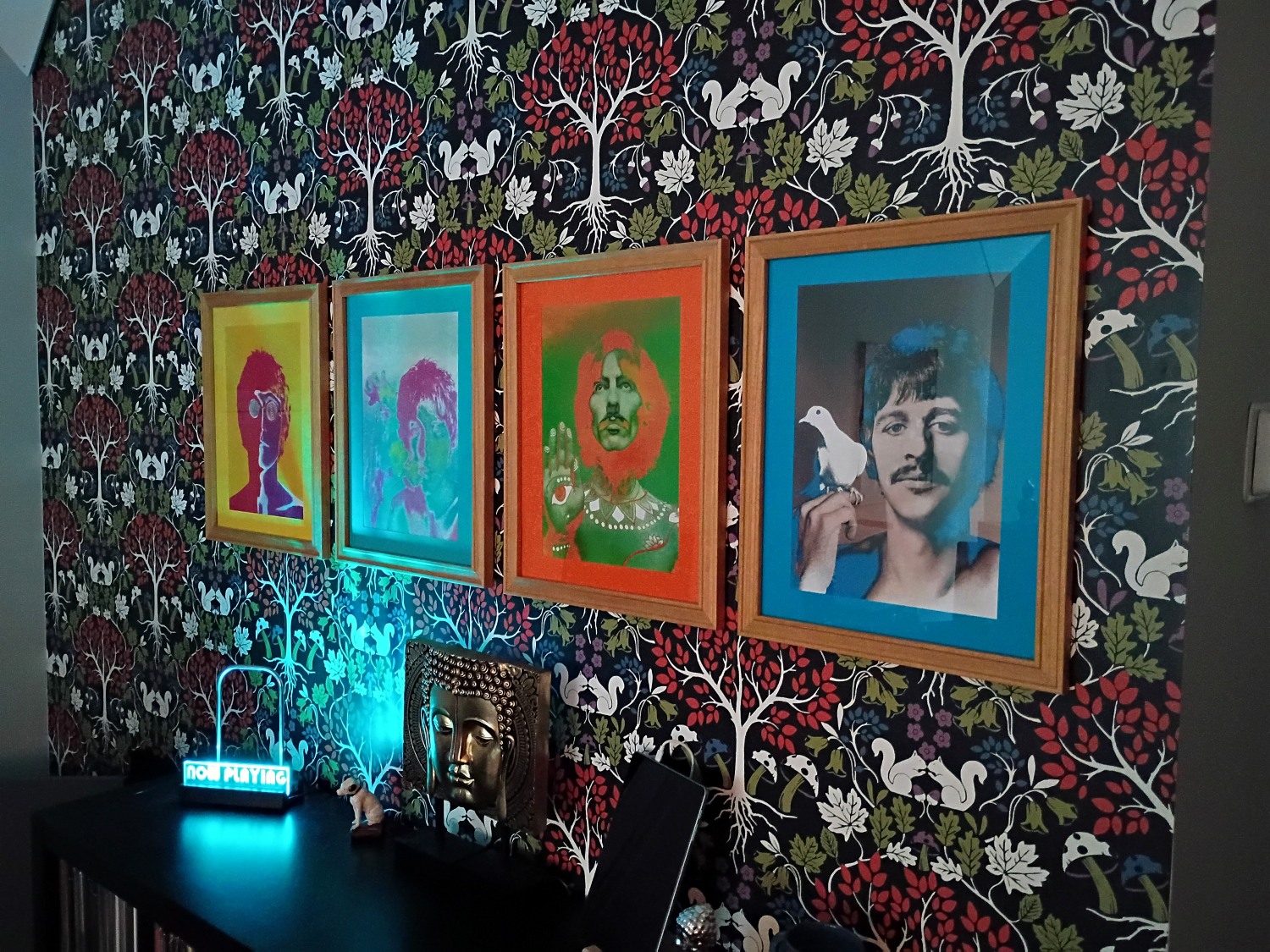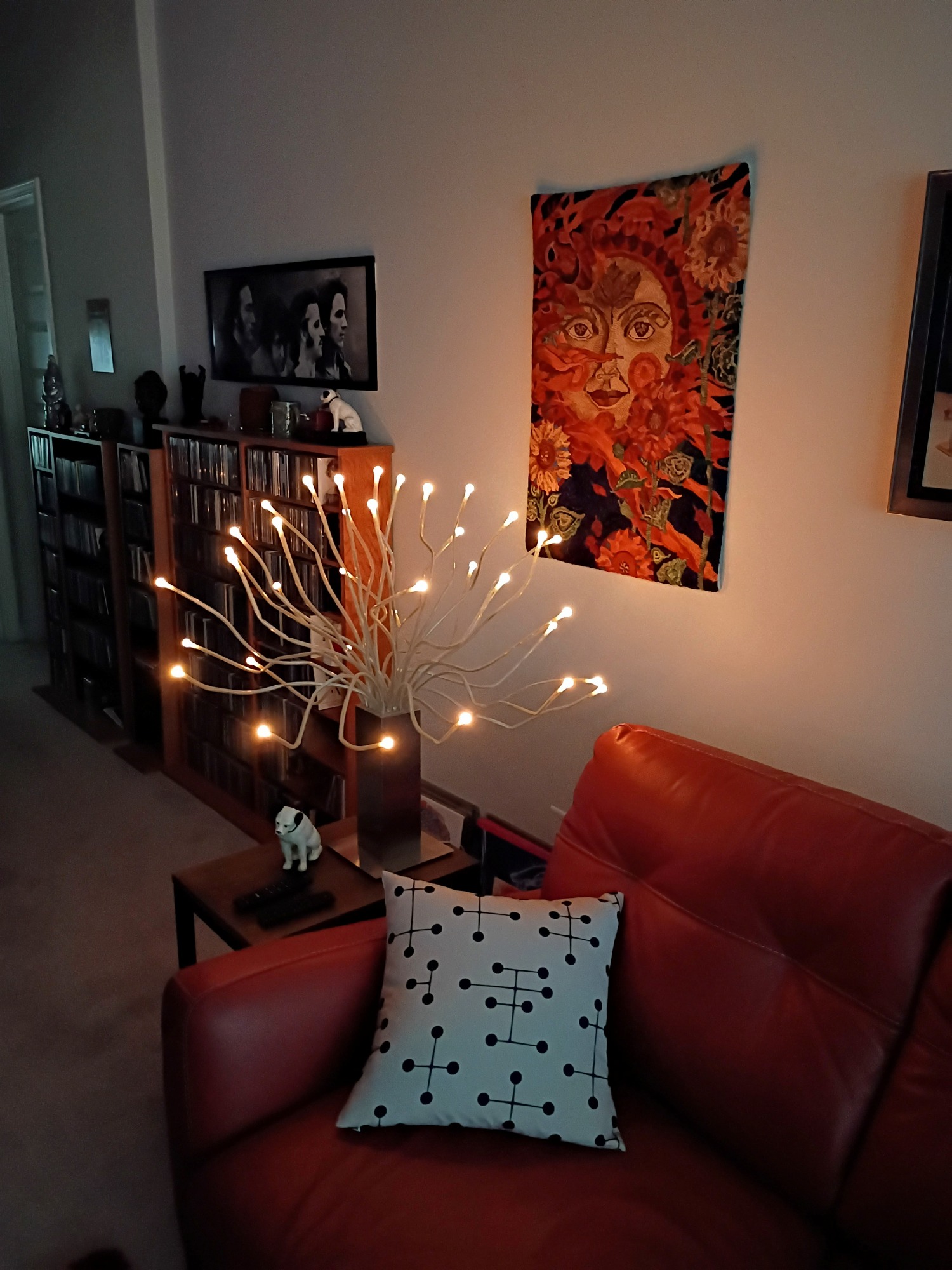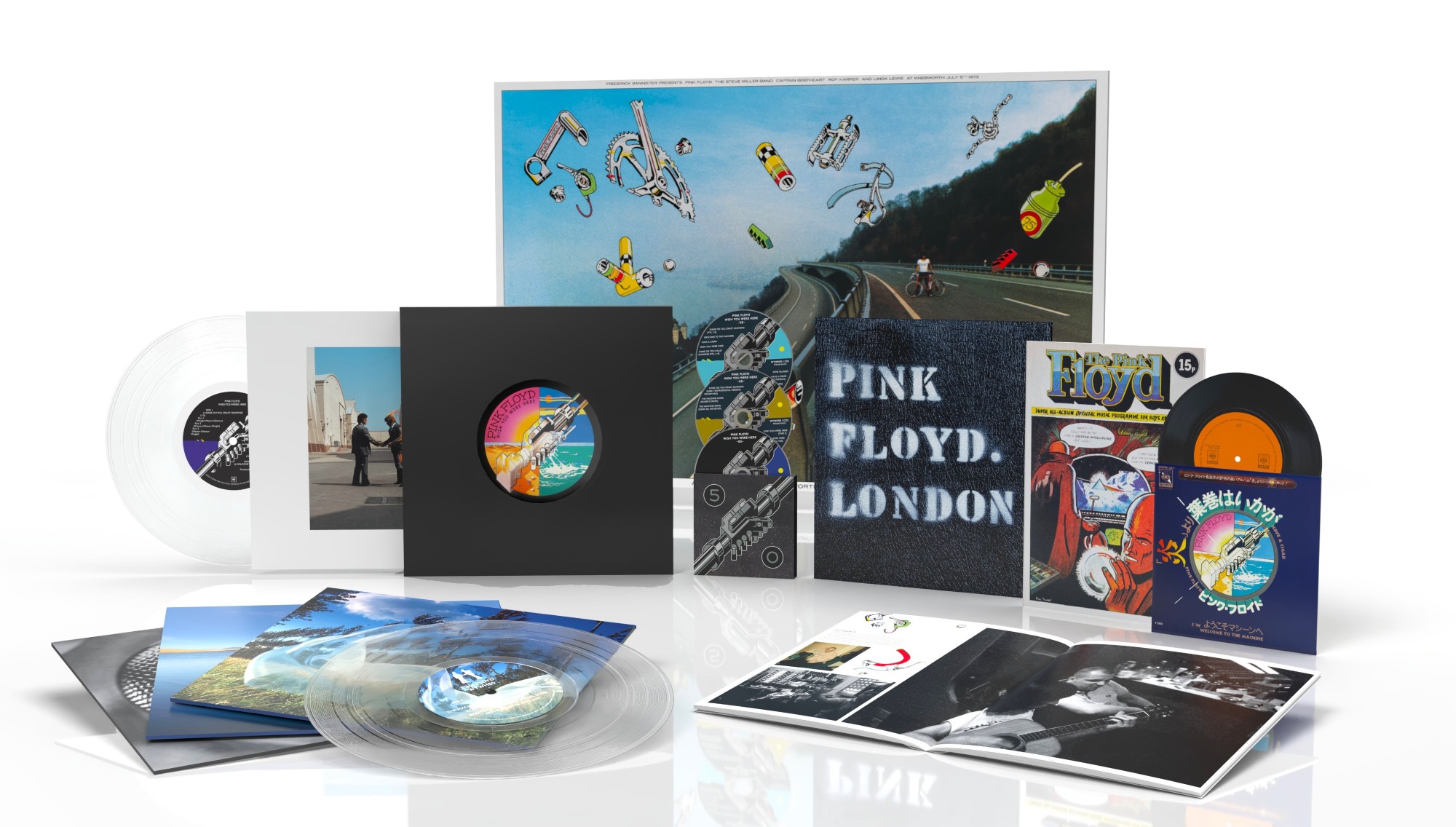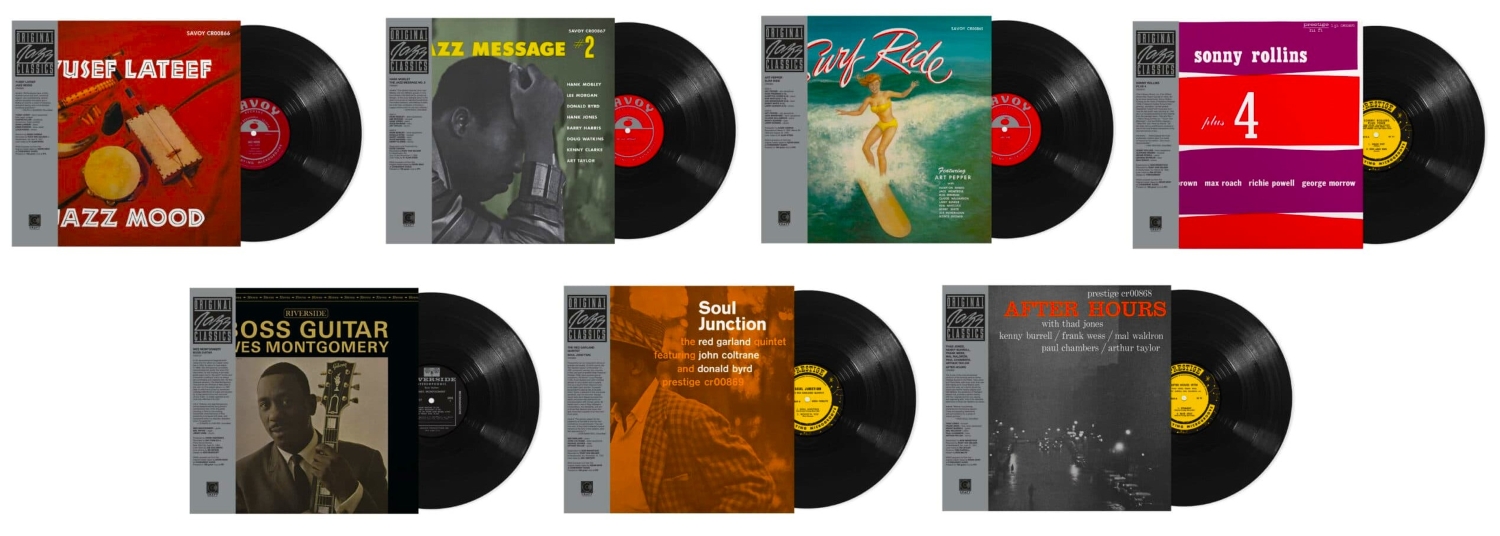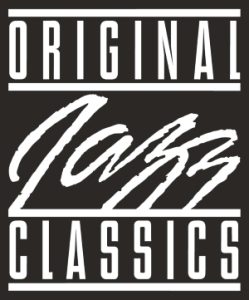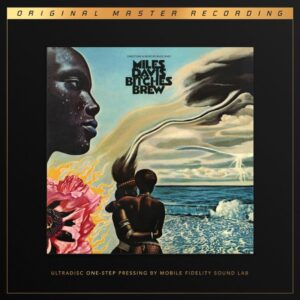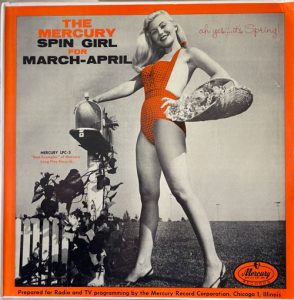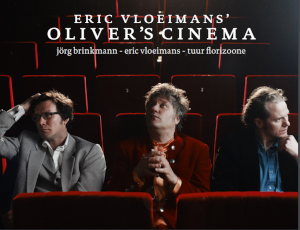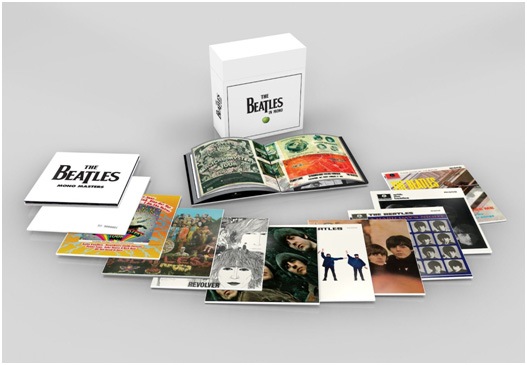
When the Beatles' digital remasters came out a few years ago on CD (and the higher-resolution 24-bit FLACs loaded onto the USB Apple version), a whole lot of people hoped for a full-blown analogue remastering for release on LP, but alas, it was not to be. When the stereo LPs finally arrived about a year later, they'd been remastered from the 16/44.1 digital files, and there were numerous complaints from audiophiles and music lovers about the resultant LPs in terms of both sound quality and packaging. I personally found the sound to be generally quite good, but it was nonetheless an audiophile disappointment. Rumors first started circulating a year ago about the possibility of a mono LP box done from the original analogue mono masters—at the time of most of the Beatles original LP release dates, mono was still the predominant format. And the greatest attention was given by George Martin and the EMI staff to the mono mixes—the stereo releases were almost an afterthought. Needless to say, a whole lot of audiophiles just started chomping at the bits in anticipation, and the results—well, let's just say that they've definitely not disappointed!
The box set is composed of eleven albums—ten studio releases and the three-LP compilation disc, The Beatles Mono Masters. And just to make one other thing perfectly clear here—you won't find either Let It Be or Abbey Road in this box—neither was ever originally released in mono, and Steve Berkowitz (the producer of the box set) decided to stay true to history. The 14 total 180 gram LPs that comprise the box were pressed in Germany by Optimal Media on AAA audiophile vinyl—a totally impressive move by EMI/Universal. Every LP in my set was perfectly flat with totally pristine surfaces and no condition issues of any kind. The condition of the new mono LPs had been a subject of great worry for me, as my box didn't arrive until about 10 days after the street date (Sept. 14). And while there were precious few comments and reviews online about the entire box, the web abounded with comments regarding the widely variable quality of the LPs that were available individually. Thankfully, I've experienced no issues with this excellent set—to say that everything has been sheer perfection is a complete understatement. You know, people on the 'net just gotta bitch about something! I've seen comments from self-described "industry insiders" on various blogs, and they all seem to agree that the actual rate of returns for any of the individual mono albums has been really low, especially compared to the abundance of problems seen with the stereo set from a few years back.
And the packaging is truly, truly extraordinary—the box itself is a masterpiece of packaging design. The LPs are enclosed in heavy-cardboard jackets, with ten of the eleven albums enclosed in Japanese resealable outer sleeves. The one exception is the 3-LP Mono Masters album—it's just too large to squeeze into one of those Japanese sleeves, heck, it's almost a stretch to get a standard double LP into one. I only have one minor complaint about the otherwise really nice jackets and outer sleeves that the LPs are enclosed in—a couple of the LP jackets (remembering that these LPs are based on the original English releases) have non-conventional gatefold panels quite unlike their American counterparts. When I got the box, the default seal of the resealable sleeves was heads up at the top, and I immediately rotated the sleeves 90 degrees to the right side—it's a personal preference of mine. It makes it easier for me to get the album out of the jacket and sleeve without having to excessively handle the LP jackets.
However, two of the gatefold LP jackets in particular are constructed in such a manner that makes my little trick more of a challenge. With Beatles For Sale, you have to completely open the gatefold to access the LP from the center at the inner fold—there's absolutely no way around completely removing the jacket from the sleeve. And with the 2-LP The Beatles (aka, The White Album), the resealable sleeve came out of the box rotated in my desired direction—but the construction of the cardboard jacket pockets is such that you must remove the LPs from the top rather than the side—so you still have to completely remove the jacket from the sleeve to access the LPs. And the dimensions of the resealable sleeve are such that it just won't fit any other way. Everything—including all the inserts—is reproduced apparently faithfully to the original issue. After fighting tooth and nail just to get the LPs out of the jackets of this one, I finally just started placing all the inserts loose inside the folded jacket and not within the LP pockets. That makes it much less of a chore to remove the LPs—and at least it's only a bit of a hassle with this album. Although I must admit that I've always liked the assembly of the American LP jackets better!
In preparation for this review, I assembled a strictly mono equipment setup, that includes a dedicated Zu Audio speaker placed in the center of the speaker wall for mono reproduction (it also doubles as my center channel speaker for my SACD surround setup). I had them custom-build this speaker for me—they had an Omen bookshelf unit with an unmatched grain pattern that was languishing in their warehouse. And Sean Casey and the guys at Zu were cooperative enough to match the driver complement that's in my current full-sized Omens, which utilize the original Zu Druid drivers. I also acquired a single Emotiva XPA-1L monoblock amplifier that outputs 35 watts of pure Class A sound into the Zu loudspeaker—which is plenty, because the Zu is rated at 97 dB/watt—there's plenty of power to spare! I also was able to obtain an Ortofon 2M Mono cartridge, which is the perfect match for my Rega P2 turntable. And my Acurus RL-11 preamp has an extra set of pre-outs, so the pure mono signal coming from the Ortofon can easily be fed into the Emotiva amp. I'll be doing reviews coming up shortly that will detail the full mono experience more completely, and those reviews will also cover the Emotiva XPA-1L amps (so impressed, I had to hear a stereo pair!), as well as the Ortofon 2M Mono cartridge, so stay tuned!
One of the great features of the box is that it contains a really nice 108-page hard bound coffee-table style book, with tons of great photos and essays that's a perfect companion to the set. There are also a lot of production notes that give a ton of insight and information into the original release of these gems. Yes, the stereo box had a comprehensive book, too, but you'll find a whole lot of really cool stuff here in this book that you won't find there! Heck, this whole set is so very nice, I'm almost paranoid about leaving any of the contents of the box out for fear of well-intentioned guests getting their grubby little fingers all over everything!
And the sound quality? Well, let's just say that it completely blows away the already-excellent CD Mono releases from a couple of years ago—EMI (now part of Universal Music Group) totally hit it out of the park with this one! And played back via my dedicated Ortofon/Rega/Acurus/Emotiva/Zu system—well, it's little short of pure ear candy. Everything here seems to have more weight, better clarity of sound and greatly improved bass over the mono CDs. I don't personally own any of the original mono LPs, but at least one really respected reviewer (OK, Michael Fremer over at Analog Planet) seems to think that the new LPs pretty much across the board trounce the mono originals, while retaining much of the original character or those releases.
My personal favorites among the eleven LPs are the earlier five albums that cover the period from Please, Please Me through Help! From Paul's opening "One, Two, Three, Four!" that kicks off "I Saw Her Standing There," the first cut on the first album, Please, Please Me, the Fab Four grab your attention, and rock in a way that had never been seen before on either side of the pond. And remember, these are the British Parlaphone releases, not the convoluted Capitol releases that eventually showed up stateside with totally mixed up track selections and reduced playing times. Regardless of all the clamoring of late by the American public for true stereo versions of these albums, I honestly enjoy the early LPs more in mono. I feel that they're more faithfully portrayed in mono than the hokey early stereo mixes that often featured hard-panned vocals to either the left or the right. Dead center, baby, that's where it's at! I know that most of the kids on my street probably give me a complete double-take when I cruise through the neighborhood with the windows down cranking such classics as "Honey Don't" and "Everybody's Trying to Be My Baby," but who cares—it's the freakin' Beatles, OK, people?
Even when we get to the later albums, like Magical Mystery Tour and The Beatles, even though most listeners probably have a preference for the stereo versions, let's remember that these LPs were originally mixed for mono. Magical Mystery Tour has always sounded disjointed and murky, and totally suffered from non-existent bass. In it's new mono incarnation, the clarity is just startlingly good, with incredible bass and a remarkable level of detail. True collectors will tell you that the only real stereo version of Magical Mystery Tour to own is the German original pressing—apparently, the German engineers totally got it right while the rest of the world got it wrong. But those German stereo pressings are rare and rather expensive, whereas the new mono pressing is relatively affordable by comparison. And that truism goes basically across the board with all these new mono LPs—just try finding decent quality original English monos and you'll spend significantly more than the cost of this new set, only to find that without exception, the new pressings easily better the mono originals.
The Beatles Mono Masters collects, on three 180 gram LPs, all the mono-release singles, b-sides and EP material (like the songs that eventually were used to create Hey Jude in the US). Some might complain that you probably could have squeezed all this material onto two LPs—and it probably could have been done, but it's been really well-organized so as to reflect the flow of the material more chronologically. Just examine the contents, and you'll see that the song selection flows almost perfectly throughout the timeline of the Beatles' career, ending with the handful of songs from Let it Be (even though the original recording dates predate their eventual release on that album) that were actually released as mono singles back in the day.
The Beatles In Mono LP box set is a towering achievement—an LP box set for the ages, and reason for all audiophiles to rejoice. It proves what we've known all along, and that is that it only takes getting a handful of persistent people involved (like Michael Fremer and Steve Berkowitz) who really, really care to make what seems like the impossible truly possible. If you have even the slightest interest in this set, I'd suggest getting one now before it's too late, or either—A) spend a whole lot more money later, or B) spend possibly the rest of your audiophile life in regret. I've seen this box on sale at a couple of different vendors on the internet for around $325, and the shipping packaging was so very robust that getting it to your door in pristine condition is definitely not an issue. And one other point—a true mono cartridge or setup isn't absolutely required to enjoy these albums—though it does truly take them to the highest level of enjoyment. Because the mono cartridge only tracks the LP groove modulation in a single plane, the background of these LPs is impressively quiet, and makes for stunningly good listening! Very, very highly recommended!!
EMI/Universal Music
www.universalmusic.com
14 LPs, MSRP $445.99




